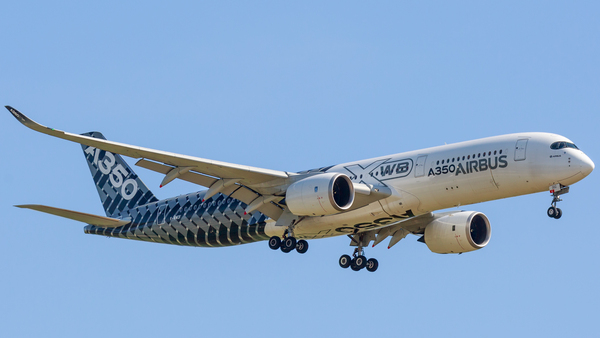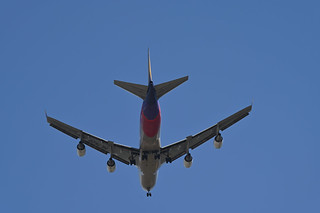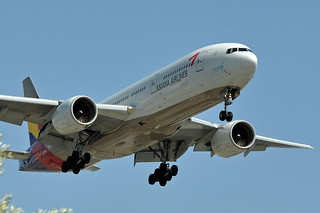Asiana A320 at Seoul on Nov 15th 2019, landed on wrong and occupied runway
Last Update: January 8, 2021 / 18:12:54 GMT/Zulu time
Incident Facts
Date of incident
Nov 15, 2019
Classification
Report
Airline
Asiana Airlines
Flight number
OZ-8708
Departure
Gwangju, South Korea
Destination
Seoul Gimpo, South Korea
Aircraft Registration
HL7738
Aircraft Type
Airbus A320
ICAO Type Designator
A320
South Korea's ARAIB released their final report in Korean only (Editorial note: to serve the purpose of global prevention of the repeat of causes leading to an occurrence an additional timely release of all occurrence reports in the only world spanning aviation language English would be necessary, a Korean only release does not achieve this purpose as set by ICAO annex 13 and just forces many aviators to waste much more time and effort each in trying to understand the circumstances leading to the occurrence. Aviators operating internationally are required to read/speak English besides their local language, investigators need to be able to read/write/speak English to communicate with their counterparts all around the globe).
The ARAIB concludes the probable causes of the serious incident were:
The crew had entered the landing runway information at the time of departure. The landing runway was changed and ATC cleared the flight to land on the changed runway. The crew however remained unaware of the change and continued landing on the prepared but wrong runway.
Contributing factors:
- Neglect to check ATIS information and failure to comply with flight procedures by the crew
- Insufficient monitoring of the flight track by tower to detect approaches to wrong runways
The ARAIB analysed that the captain was pilot monitoring and the first officer was pilot flying. At the time at and before departure from Gwangju the ATIS Information G at Gimpo Airport announced runway 32R was used for landings. At 17:16L the crew prepared their FMS for landing on runway 32R. Following flight preparation, while passengers were boarding at Gwangju, Gimpo Airport changed their ATIS now indicating runway 32L, ATIS switched to Information H, was used for landings at 17:48L. The aircraft took off from Gwangju at 17:55L, reached FL190 at 18:03L, started the descent at 18:10L, at that time ATIS Information J was active, the captain listened to ATIS until hearing the identifier J, did not check the further ATIS information, and just noted the letter J down. The captain thus remained unaware that the runway had changed. The captain should have checked ATIS carefully and in full.
On approach to Gimpo Approach Control advised the crew their landing runway would be 32L, the captain read back 32L, however, did not recognize they had setup for 32R and thus did not initiate reprogramming of the FMS or switch of the approach plates. Tower later cleared them to land on runway 32L, but again the switch from 32R and 32L remained undetected by the crew. The captain had "fixed" runway 32R in his mind and thus did not monitor and recognize that they were actually talking about runway 32L.
The preceeding traffic (that later conflicted with the A320 on runway 32R) had been about 6-8nm ahead of the A320, landed on runway 32L and was taxiing to the apron. Tower had been monitoring their flight progress and verified they were indeed on approach to runway 32L at the correct profile. Tower subsequently zoomed his radar display out and thus did not detect that the A320 had joined the extended runway center line of 32R. Only at low altitude the controller became aware through a visual check that the A320 was approaching the wrong runway but deemed it unsafe to instruct a go around, rather instructed the crossing aircraft to accelerate crossing.
The ARAIB further analysed that the departure of HL7728 was rushed due to a delay. The first officer was not familiar with Gimpo Airport, there was lack of cockpit resource management causing no communication about the pre-flight preparation of the FMS and leaving the first officer in state of guessing and dependence which led to a false judgement of the situation. In addition, the approach briefing was skipped removing another barrier of defense.
Incident Facts
Date of incident
Nov 15, 2019
Classification
Report
Airline
Asiana Airlines
Flight number
OZ-8708
Departure
Gwangju, South Korea
Destination
Seoul Gimpo, South Korea
Aircraft Registration
HL7738
Aircraft Type
Airbus A320
ICAO Type Designator
A320
This article is published under license from Avherald.com. © of text by Avherald.com.
Article source
You can read 1 more free article without a subscription.
Subscribe now and continue reading without any limits!
Read unlimited articles and receive our daily update briefing. Gain better insights into what is happening in commercial aviation safety.
Send tip
Support AeroInside by sending a small tip amount.
Related articles
Asiana A333 at Seoul on Jun 21st 2025, engine problem
An Asiana Airlines Airbus A330-300, registration HL8286 performing flight OZ-108 from Seoul (South Korea) to Tokyo Narita (Japan) with 263 people on…
Asiana A359 at San Francisco on Feb 23rd 2025, low altitude alert on final approach
An Asiana Airbus A350-900, registration HL8382 performing flight OZ-212 from Seoul (South Korea) to San Francisco,CA (USA), was on final approach to…
Asiana A333 at Chiang Mai on Jan 24th 2025, rejected takeoff due to engine anomaly
An Asiana Airbus A330-300, registration HL7747 performing flight OZ-766 from Chiang Mai (Thailand) to Seoul (South Korea), was accelerating engines…
Asiana B744 at San Francisco on Jan 24th 2024, sparks seen from aircraft
An Asiana Boeing 747-400 freighter, registration HL7420 performing flight OZ-285 from San Francisco,CA (USA) to Seoul (South Korea), was climbing out…
Asiana B772 at Singapore on Nov 16th 2023, engine shut down in flight
An Asiana Boeing 777-200, registration HL7700 performing flight OZ-754 from Singapore (Singapore) to Seoul (South Korea) with 279 people on board,…
Newest articles
India Express B738 at Ras al-Khaimah on Apr 22nd 2025, tail strike on landing
An Air India Express Boeing 737-800, registration VT-AXZ performing flight IX-331 from Khozikode (India) to Ras al-Khaimah (United Arab Emirates),…
Delta A321 near Kansas City on Jan 3rd 2026, engine shut down in flight
A Delta Airlines Airbus A321-200, registration N349DX performing flight DL-2883 from Denver,CO to Detroit,MI (USA) with 169 passengers and 6 crew,…
Subscribe today
Are you researching aviation incidents? Get access to AeroInside Insights, unlimited read access and receive the daily newsletter.
Pick your plan and subscribePartner

ELITE Simulation Solutions is a leading global provider of Flight Simulation Training Devices, IFR training software as well as flight controls and related services. Find out more.
SafetyScan Pro provides streamlined access to thousands of aviation accident reports. Tailored for your safety management efforts. Book your demo today
AeroInside Blog
Popular aircraft
Airbus A320Boeing 737-800
Boeing 737-800 MAX
Popular airlines
American AirlinesUnited
Delta
Air Canada
Lufthansa
British Airways








